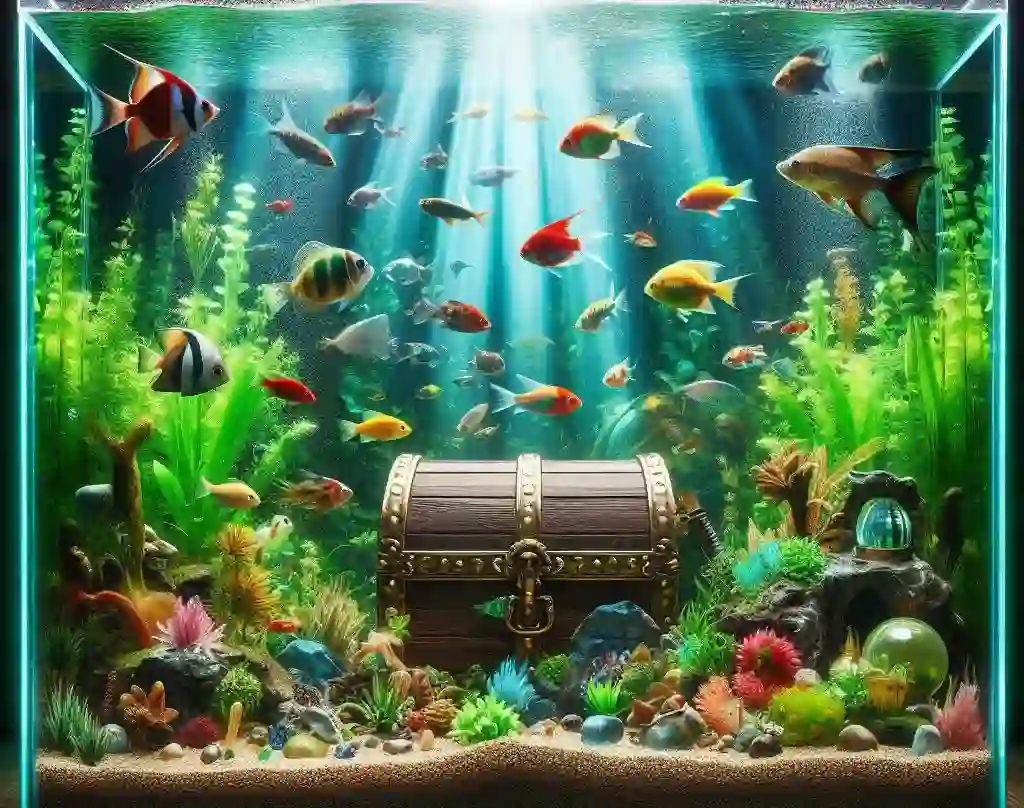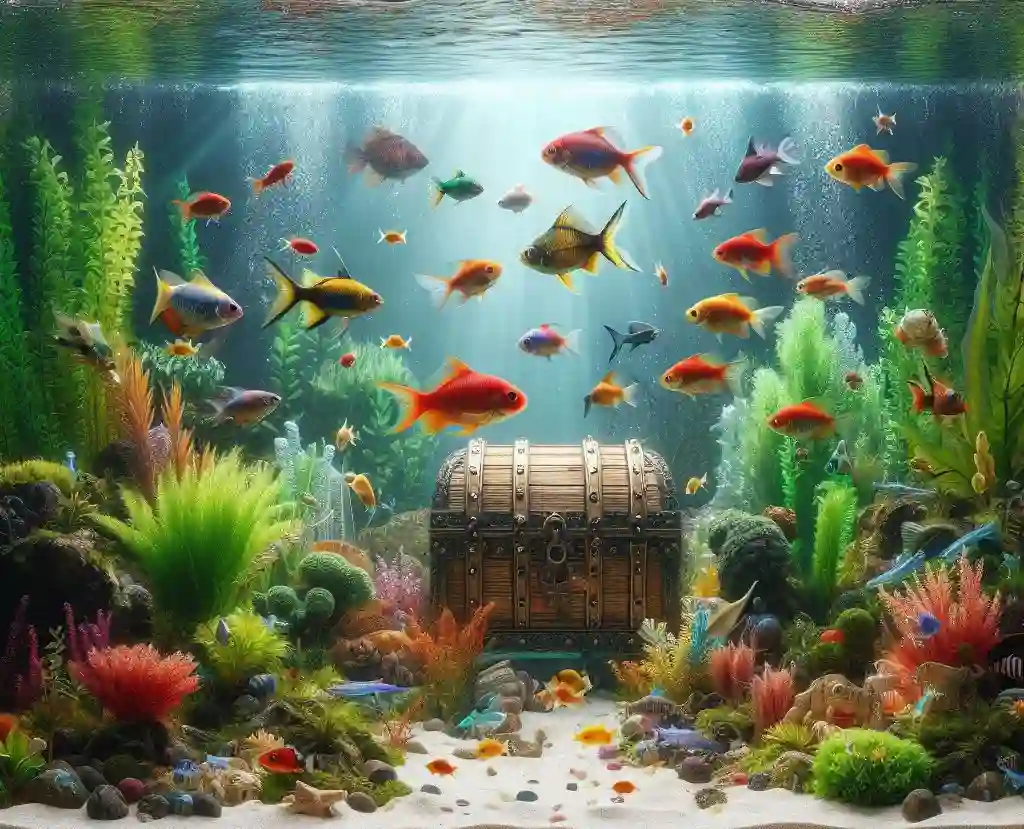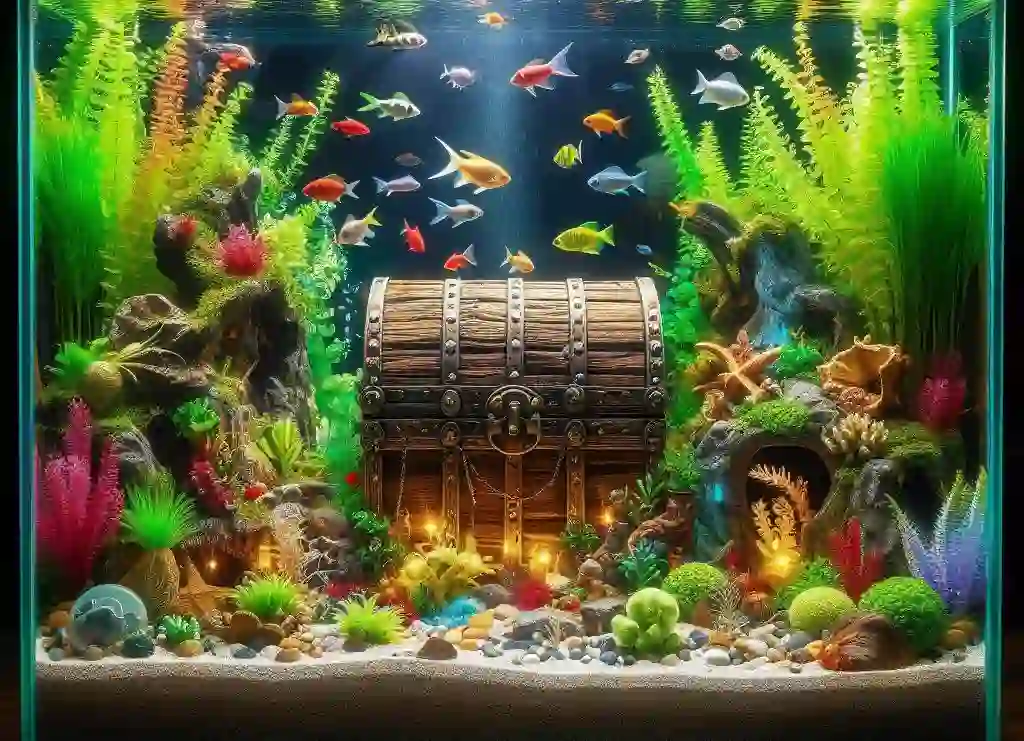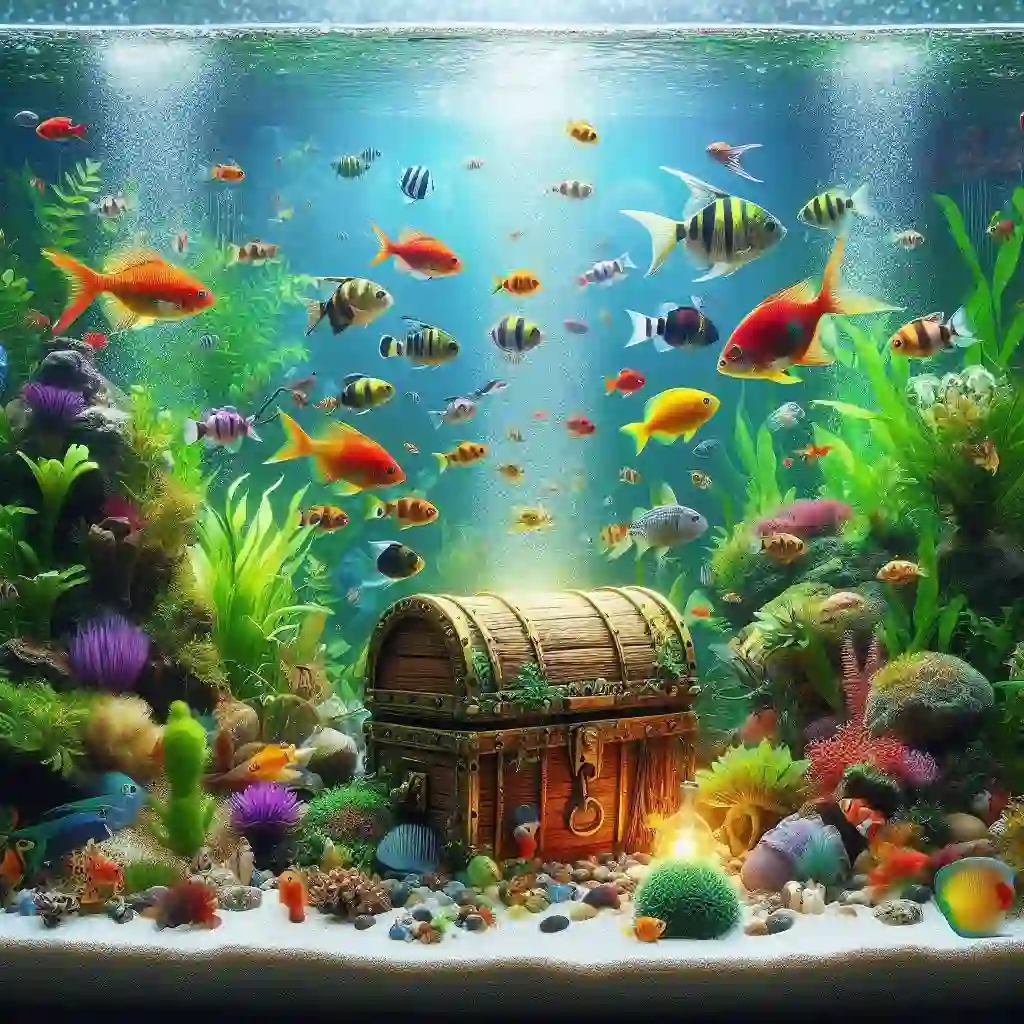No Filter Aquarium: A Game-Changer for Aquatic Enthusiasts
A no filter aquarium is a unique and innovative approach to keeping fish, one that eschews the traditional filter-based systems in favor of a more natural, self-sustaining ecosystem.
In this guide, we’ll explore the world of no filter aquarium, covering the basics of setup, maintenance, and care, as well as tips and tricks for creating a thriving ecosystem that’s perfect for beginners and experienced aquarists alike.
No Filter Aquarium: A Quick Guide

Benefits of a No Filter Aquarium
- Reduced maintenance
- Lower energy costs
- More natural and sustainable ecosystem
- Aesthetically pleasing
Getting Started
- Choose the right tank size and type
- Select the right fish and plants
- Cycle the tank properly
- Monitor water parameters and make adjustments as needed
Tips for Success
- Regularly clean the tank and its decorations
- Monitor water parameters and make adjustments as needed
- Avoid overfeeding and maintain a balanced diet for your fish
- Provide plenty of hiding places and visual barriers for your fish
Common Challenges
- Water quality issues
- Algae growth
- Fish stress and disease
Solutions
- Regular water changes
- Adjusting lighting and water circulation
- Providing plenty of hiding places and visual barriers for your fish
The Science Behind No Filter Aquariums: How They Work
The Nitrogen Cycle
At the heart of a no filter aquarium is the nitrogen cycle. This natural process involves the conversion of ammonia (NH3) into nitrite (NO2-) and eventually nitrate (NO3-). Beneficial bacteria, such as Nitrosomonas and Nitrobacter, drive this process.
- Ammonia (NH3): Fish waste and decaying organic matter release ammonia, a toxic compound that can harm aquatic life.
- Nitrite (NO2-): Beneficial bacteria, like Nitrosomonas, convert ammonia into nitrite, a less toxic compound.
- Nitrate (NO3-): Nitrobacter bacteria convert nitrite into nitrate, a relatively harmless compound that can be absorbed by plants.
The Role of Beneficial Bacteria
Beneficial bacteria are the unsung heroes of no filter aquariums. These microorganisms colonize the tank, gravel, and decorations, creating a thriving ecosystem. They break down organic matter, recycle nutrients, and maintain water quality.
The Importance of Biological Balance
A no filter aquarium relies on a delicate balance between beneficial bacteria, plants, and aquatic life. When this balance is maintained, the ecosystem thrives. Plants absorb excess nutrients, while beneficial bacteria keep the water clean and clear.
Benefits of a Filter-Free Aquarium: Why It’s a Game-Changer

- Simplified Maintenance: No filter means less equipment to clean and maintain. Say goodbye to tedious filter cleaning and hello to more free time!
- Natural Water Quality: Filter-free aquariums rely on natural processes to maintain water quality, creating a more stable and healthy environment for aquatic life.
- Increased Biodiversity: Without the constant water circulation and disturbance caused by filters, filter-free aquariums can support a wider variety of plants and animals.
- Reduced Energy Consumption: No filter means less energy consumption, making filter-free aquariums a more eco-friendly option.
- Improved Water Clarity: Filter-free aquariums often have crystal-clear water, thanks to the natural processes that maintain water quality.
- Enhanced Aesthetics: Without the bulk of a filter, filter-free aquariums can be designed with a more minimalist, sleek aesthetic.
- Cost-Effective: No filter means no expensive filter replacements or upgrades, saving you money in the long run.
- Increased Water Volume: Without the space taken up by a filter, filter-free aquariums can accommodate more water volume, creating a more stable environment.
- Reduced Noise Pollution: Filter-free aquariums are often quieter, making them ideal for bedrooms or living rooms.
- A More Natural Environment: Filter-free aquariums mimic natural ecosystems, creating a more authentic and engaging experience for aquarists.
Setting Up a No Filter Aquarium: A Step-by-Step Guide
Step 1: Choose the Right Tank
- Select a tank that’s at least 10 gallons to provide a stable environment.
- Consider a tank with a wide surface area to promote gas exchange.
- Avoid tanks with built-in filters or complex plumbing systems.
Step 2: Select the Right Substrate
- Choose a substrate that can support beneficial bacteria growth, such as gravel or sand.
- Avoid substrates with high levels of organic matter, as they can lead to water quality issues.
Step 3: Add Decorations and Hardscape
- Add decorations and hardscape that provide hiding places and visual interest.
- Incorporate plants that can help maintain water quality, such as Anacharis or Java Moss.
Step 4: Cycle the Tank
- Allow the tank to cycle for 2-4 weeks to establish beneficial bacteria colonies.
- Monitor water parameters, such as ammonia and nitrite levels, to ensure the tank is cycling properly.
Step 5: Introduce Beneficial Bacteria
- Add beneficial bacteria supplements or introduce them through the addition of mature filter media or gravel from an established tank.
Step 6: Introduce Plants
- Add plants that are suitable for a no filter aquarium, such as Anacharis, Java Moss, or Water Wisteria.
- Ensure plants are healthy and free of pests or diseases.
Step 7: Introduce Fish
- Choose fish that are suitable for a no filter aquarium, such as small schooling fish or peaceful community fish.
- Introduce fish slowly and in small numbers to avoid stressing the ecosystem.
Step 8: Monitor and Maintain
- Regularly monitor water parameters, such as pH, ammonia, and nitrite levels.
- Perform regular water changes (10-20% every week) to maintain water quality.
- Trim plants and remove any debris or waste to maintain a healthy ecosystem.
The Importance of Beneficial Bacteria in No Filter Aquariums

What are Beneficial Bacteria?
Beneficial bacteria are microorganisms that live in the aquarium and feed on waste products, such as ammonia and nitrite. These bacteria are essential for maintaining a healthy and balanced ecosystem.
The Role of Beneficial Bacteria in No Filter Aquariums
In a no filter aquarium, beneficial bacteria are responsible for:
- Breaking down waste: Beneficial bacteria convert ammonia into nitrite and eventually nitrate, which is then absorbed by plants or removed through water changes.
- Recycling nutrients: Beneficial bacteria recycle nutrients, making them available to plants and other aquatic life.
- Maintaining water quality: Beneficial bacteria help to maintain water quality by breaking down organic matter and reducing the risk of waterborne diseases.
Types of Beneficial Bacteria
There are several types of beneficial bacteria that are essential for a healthy no filter aquarium, including:
- Nitrosomonas: Converts ammonia into nitrite
- Nitrobacter: Converts nitrite into nitrate
- Pseudomonas: Breaks down organic matter and recycles nutrients
- Bacillus: Produces antibiotics and helps to maintain a balanced ecosystem
How to Encourage Beneficial Bacteria in Your No Filter Aquarium
To encourage beneficial bacteria in your no filter aquarium, follow these tips:
- Provide a suitable environment: Beneficial bacteria thrive in a stable, well-oxygenated environment with a pH between 6.5 and 8.5.
- Add beneficial bacteria supplements: Beneficial bacteria supplements can help to establish a healthy colony of beneficial bacteria.
- Maintain good water quality: Regular water changes and a balanced diet for your fish will help to maintain good water quality and encourage beneficial bacteria growth.
- Avoid over-cleaning: Avoid over-cleaning your aquarium, as this can disrupt the balance of beneficial bacteria.
No Filter Aquarium Maintenance: Tips and Tricks for Success
- Regular Water Changes: Regular water changes are crucial in a no filter aquarium. Aim to change 10-20% of the water weekly to maintain water quality and prevent the buildup of toxins.
- Monitor Water Parameters: Regularly test the water for ammonia, nitrite, and nitrate levels. This will help you identify any issues before they become major problems.
- Maintain Good Water Circulation: Good water circulation is essential in a no filter aquarium. Ensure that your tank has adequate water movement to prevent stagnant areas.
- Provide Adequate Hiding Places: Provide plenty of hiding places for your fish to reduce stress and promote a healthy environment.
- Avoid Overfeeding: Overfeeding can lead to water quality issues in a no filter aquarium. Feed your fish only what they can consume within a few minutes.
- Maintain a Balanced Ecosystem: Ensure that your tank has a balanced ecosystem by introducing plants, beneficial bacteria, and other aquatic life.
- Clean the Gravel: Regularly clean the gravel to prevent the buildup of debris and waste.
- Monitor for Algae: Monitor your tank for algae growth and take action to prevent it from getting out of control.
- Provide Regular Tank Maintenance: Regularly clean the tank and its decorations to prevent the buildup of debris and waste.
- Be Patient: No filter aquariums can take time to establish and mature. Be patient and don’t rush the process.
Choosing the Right Fish for a No Filter Aquarium
- Research, Research, Research: Research different fish species to determine which ones are suitable for a no filter aquarium. Look for fish that are tolerant of changes in water quality and can thrive in a natural environment.
- Choose Hardy Fish: Select fish that are hardy and can adapt to changes in water quality. Avoid fish that are sensitive to water conditions or require precise water parameters.
- Avoid Aggressive Fish: Avoid fish that are aggressive or territorial, as they can stress out other fish and disrupt the ecosystem.
- Select Small Schooling Fish: Small schooling fish, such as neon tetras or white cloud mountain minnows, are ideal for no filter aquariums. They are active, social, and can thrive in a natural environment.
- Consider Cold-Water Fish: Cold-water fish, such as goldfish or koi, can thrive in a no filter aquarium. They are tolerant of changes in water quality and can adapt to a natural environment.
- Avoid Fish that Require High Water Flow: Fish that require high water flow, such as angelfish or discus, are not suitable for no filter aquariums.
- Choose Fish that are Easy to Feed: Choose fish that are easy to feed and don’t require specialized diets.
Recommended Fish for a No Filter Aquarium
- Neon Tetras
- White Cloud Mountain Minnows
- Goldfish
- Koi
- Zebra Danios
- Cherry Barbs
- Harlequin Rasboras
Common Challenges and Solutions in No Filter Aquariums
Challenge 1: Water Quality Issues
- Solution: Regular water changes, monitoring water parameters, and maintaining a balanced ecosystem can help prevent water quality issues.
Challenge 2: Algae Growth
- Solution: Reduce lighting, increase water changes, and introduce algae-controlling plants or animals to prevent algae growth.
Challenge 3: Fish Stress and Disease
- Solution: Provide plenty of hiding places, maintain good water quality, and introduce fish that are suitable for a no filter aquarium.
Challenge 4: Beneficial Bacteria Imbalance
- Solution: Monitor beneficial bacteria levels, introduce beneficial bacteria supplements, and maintain a balanced ecosystem.
Challenge 5: Cycling Issues
- Solution: Allow the tank to cycle properly, monitor water parameters, and introduce fish slowly and in small numbers.
Challenge 6: Plant Care
- Solution: Choose plants that are suitable for a no filter aquarium, provide adequate lighting, and maintain good water quality.
Challenge 7: Fish Compatibility
- Solution: Research fish compatibility, introduce fish slowly and in small numbers, and provide plenty of hiding places.
Challenge 8: Equipment Failure
- Solution: Regularly maintain and clean equipment, have a backup plan in case of equipment failure, and consider using redundant systems.
Challenge 9: Water Circulation
- Solution: Ensure good water circulation, add powerheads or adjust decorations to improve water flow.
Challenge 10: Maintenance and Upkeep
- Solution: Regularly clean the tank and its decorations, monitor water parameters, and perform regular water changes.
Advanced No Filter Aquarium Techniques: Taking it to the Next Level
- Refugiums and Algae Turf Scrubbers: Create a refugium or algae turf scrubber to provide a habitat for beneficial algae and microorganisms.
- Beneficial Bacteria Boosters: Use beneficial bacteria boosters to enhance the growth of beneficial bacteria and improve water quality.
- Advanced Water Circulation: Use powerheads and adjust decorations to create advanced water circulation patterns that promote healthy water flow.
- Targeted Water Changes: Perform targeted water changes to remove specific pollutants and toxins from the water.
- Microbial Mats: Create microbial mats to provide a habitat for beneficial microorganisms and improve water quality.
- Advanced Plant Care: Use advanced plant care techniques, such as CO2 injection and fertilization, to promote healthy plant growth.
- Fish Training and Enrichment: Train your fish to perform tricks and provide enrichment activities to stimulate their natural behavior.
- Advanced Water Testing: Use advanced water testing techniques, such as ICP-OES, to monitor water parameters and identify potential issues.
- Biological Diversification: Introduce a diverse range of aquatic life, including fish, invertebrates, and microorganisms, to create a thriving ecosystem.
- Advanced Aquascaping: Use advanced aquascaping techniques, such as 3D printing and ceramic decorations, to create a unique and visually stunning aquarium.
FAQs
Q: What is a no filter aquarium?
A: A no filter aquarium is a type of aquarium that does not use a mechanical filter to maintain water quality. Instead, it relies on natural processes and beneficial bacteria to keep the water clean and clear.
Q: How does a no filter aquarium work?
A: A no filter aquarium works by creating a balanced ecosystem that relies on beneficial bacteria, plants, and microorganisms to maintain water quality. The aquarium is designed to mimic a natural ecosystem, with plants and microorganisms working together to break down waste and maintain water quality.
Q: What are the benefits of a no filter aquarium?
A: The benefits of a no filter aquarium include reduced maintenance, lower energy costs, and a more natural and sustainable ecosystem. No filter aquariums can also be more aesthetically pleasing, as they do not require the use of unsightly filters.
Q: What types of fish can be kept in a no filter aquarium?
A: Many types of fish can be kept in a no filter aquarium, including small schooling fish, peaceful community fish, and some species of cichlids. However, it’s important to research and choose fish that are suitable for a no filter aquarium.
Q: How do I maintain a no filter aquarium?
A: Maintaining a no filter aquarium requires regular water changes, monitoring of water parameters, and ensuring that the aquarium is well-maintained and clean. It’s also important to provide a balanced diet for your fish and to avoid overfeeding.
Q: Can I use a no filter aquarium for saltwater fish?
A: While it is possible to keep saltwater fish in a no filter aquarium, it is not recommended. Saltwater fish require more precise water parameters and a more stable environment, which can be difficult to maintain in a no filter aquarium.
Q: How long does it take to set up a no filter aquarium?
A: Setting up a no filter aquarium can take some time, as it requires cycling the tank and establishing a balanced ecosystem. It’s recommended to allow at least 4-6 weeks for the tank to cycle and establish a healthy ecosystem.
Q: Can I convert my existing aquarium to a no filter aquarium?
A: Yes, it is possible to convert an existing aquarium to a no filter aquarium. However, it’s important to do so gradually and carefully, as sudden changes can be stressful for your fish. It’s recommended to research and plan carefully before making the conversion.

Hello, I’m Aria Cooper, the heart and soul behind Swimmy Buddies. As a devoted fish aficionado, I share my aquatic adventures and expertise to inspire your own underwater explorations. 🐠🌊



